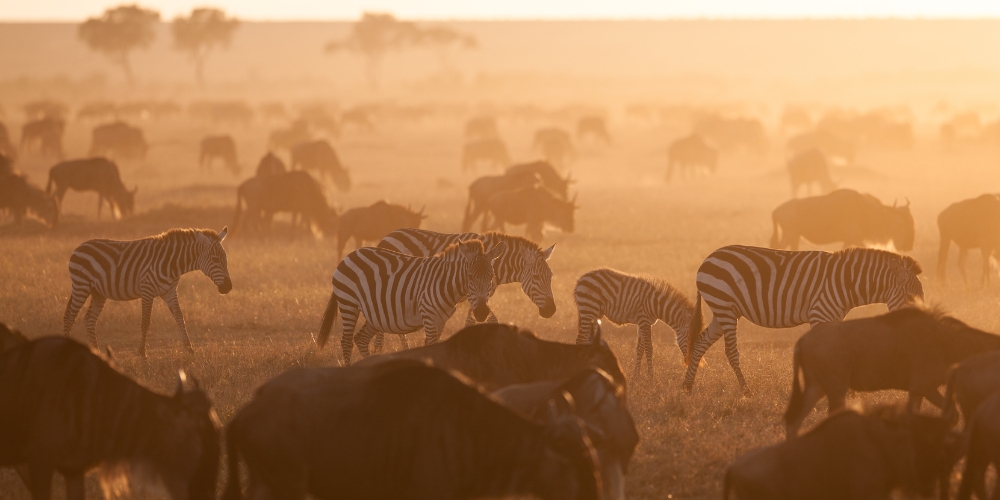Unveiling the Wonders of the Great Migration: Beyond River Crossings
In the heart of East Africa lies a majestic phenomenon, it has captivated the imaginations of travelers and nature enthusiasts for centuries. The Great Migration, spanning the Serengeti plains of Tanzania and the Maasai Mara in Kenya, is often synonymous with the dramatic river crossings that see millions of wildebeests and zebras braving crocodile-infested waters. However, there's far more to this awe-inspiring event than meets the eye.

The Great Migration: A Natural Marvel
The Great Migration is a testament to the raw power of nature, an annual journey undertaken by millions of herbivores in search of greener pastures and freshwater sources. At the heart of this migration are the wildebeests, accompanied by zebras and gazelles, forming a vast and dynamic ecosystem on the move. The cycle begins in the Serengeti, where the herds gather in colossal numbers, driven by primal instincts and the urge to follow the rains and abundant grazing lands.
Beyond the River Crossings
While the river crossings are undeniably the most dramatic moments of the Great Migration, there's an entire narrative unfolding throughout the year. The migration is a continuous cycle of movement, dictated by the changing seasons and the availability of food and water. Each stage of the journey presents unique opportunities for observation and appreciation.

Calving Season
One of the most fascinating aspects of the Great Migration is the calving season, which occurs between January and March in the Serengeti. During this time, the plains come alive with the sights and sounds of newborn animals taking their first tentative steps. Predators lurk in the shadows, drawn by the abundance of vulnerable prey, making it a critical time for survival and natural selection.
Predator-Prey Dynamics
The Great Migration is not just a spectacle of movement; it's a complex interplay of predator-prey dynamics that shape the ecosystem. The predators, including lions, cheetahs, and hyenas, follow the herds, honing their hunting skills and ensuring their own survival. Witnessing a lioness stealthily stalking her prey or a cheetah launching into a lightning-fast chase is a humbling reminder of nature's balance and brutality.

Cultural Encounters
Beyond its ecological significance, the Great Migration holds cultural importance for the indigenous communities that inhabit the region. The Maasai people, renowned for their vibrant culture and pastoral way of life, have coexisted with the wildlife for generations. Engaging with local communities offers a deeper understanding of their traditions, livelihoods, and the challenges they face in preserving their heritage amidst modernization and conservation efforts.
Conservation Imperative
The Great Migration serves as a poignant reminder of the fragility of our planet's ecosystems and the urgent need for conservation. Habitat loss, poaching, and human-wildlife conflict threaten the delicate balance of this natural phenomenon. Responsible tourism practices, sustainable development initiatives, and community-based conservation efforts are essential in safeguarding the future of the Great Migration and the countless species that depend on it for survival.
Experiencing the Great Migration
For those fortunate enough to witness the Great Migration firsthand, the experience is nothing short of transformative. Whether embarking on a thrilling safari adventure, hot air balloon ride over the savannah, or cultural immersion with local communities, there's no shortage of ways to immerse oneself in the wonders of this extraordinary event. From luxury lodges to tented camps, accommodation options cater to every preference, ensuring a comfortable and memorable stay amidst the wild beauty of East Africa.
Conclusion
In conclusion, the Great Migration transcends the boundaries of a mere river crossing; it's a symphony of life, death, and renewal unfolding across the plains of Tanzania and Kenya. Beyond the iconic images immortalized in nature documentaries, lies a rich tapestry of ecological, cultural, and experiential wonders waiting to be discovered. As caretakers of our planet, let us cherish and protect this natural marvel for generations to come, ensuring that the Great Migration continues to inspire awe and wonder for the next centuries.
Inspired? Check out our Great Migration Tanzania Safari or our Classic Kenya Safari